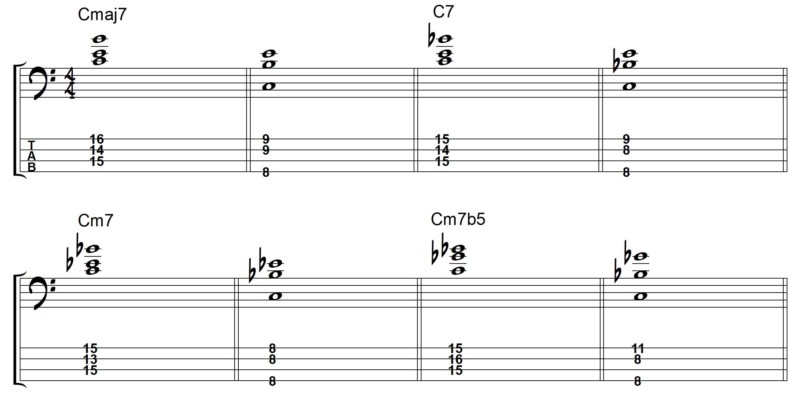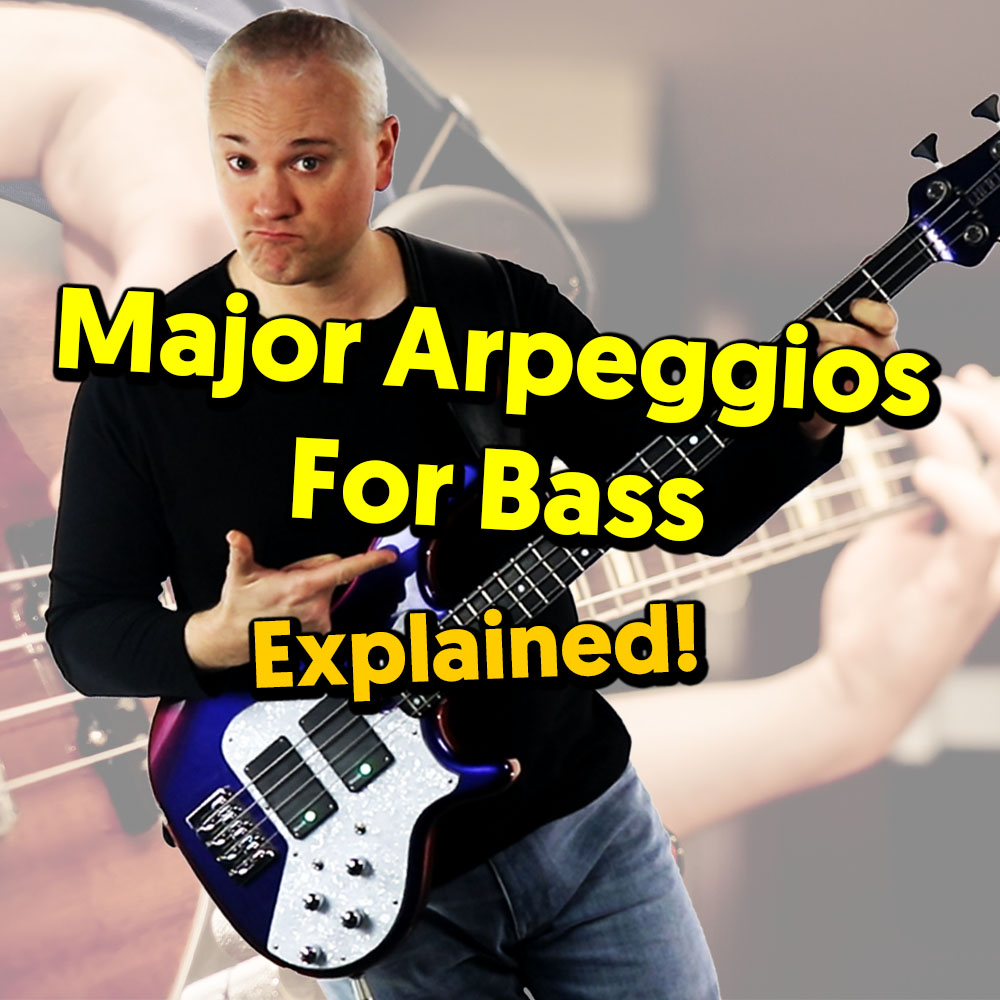In previous lessons we’ve looked at triads, seventh chords and many other types of chords. But today we’re going to look at the four most common 7th chords you’re likely to encounter and look at them as both block chords and as arpeggios with the aim of learning them as a ‘sound’.
The Four Essential Seventh Arpeggio Types
Let’s begin with a look at the four most common seventh chord qualities:
- Major 7 (Major Triad + Major 7th)
- Dominant 7 (Major Triad + Minor 7th)
- Minor 7 (Minor Triad + Minor 7th)
- Minor 7 Flat 5 (Diminished Triad + Minor 7th)
A basic fingering for each arpeggio on a root of C is shown below:

Block Chord Voicings
Next let’s try building those chords as block structures on the bass.
The first thing you need to know when learning these chords is that we generally remove certain notes in order to fit them nicely on a four string instrument and to avoid any kind of muddiness in what is essentially a low register.
The note we commonly look to remove first is the fifth because it doesn’t really have any chord quality to it. The minor 7 flat 5 is an exception to this but in the other three chords we can remove the fifth without any impact to the sound of the chord.
For the Minor 7 Flat 5 we keep the flattened fifth and remove the minor third.
Below are the chords on a root note of C built from the E string and A string:
The upside to learning these chords on bass is that you get to improve your ear and understand their quality as a sound.
For example, the major 7 chord sounds like a major triad (in that it has that major quality) but the major 7th provides that bittersweet quality.
As an exercise, just try playing around with these chords and try moving them around the fretboard to acclimatise yourself to the overall sound.
Two Octave Arpeggios
Finally, let’s try expanding on the arpeggios by playing them in two octaves. We’re going to try this in several different ways.
With two octave arpeggios we’re essentially looking to shift positions from one area to another. For our two octave arpeggios we can try transitioning from one area to another using each string in turn for our shift. These different strings will act as doorways from one area of the fretboard to another.
Below we see the arpeggios for each chord on a root note of C (Be sure to practice these arpeggios on all root notes):
C Major 7
G String Transition:

D String Transition:

A String Transition:

E String Transition:

Cmaj7 Practice Track:
C Dominant 7
G String Transition:

D String Transition:

A String Transition:

E String Transition:

C7 Practice Track:
C Minor 7
G String Transition:

D String Transition:

A String Transition:

E String Transition:

Cm7 Practice Track:
C Minor 7 Flat 5
G String Transition:

D String Transition:

A String Transition:

E String Transition:

Cm7b5 Practice Track:














The potential benefits of this exercise, particularly when applied to all root notes, are truly incalculable. Great stuff. Ta.
great lesson! thanks